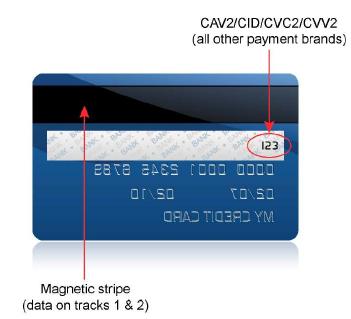What is a Magnetic Stripe Card?
The most commonly available type of credit and debit card in the United States is a Magnetic Stripe or MagStripe card. As shown below, the black band on the back of your card is the magnetic stripe. It stores information by modifying the magnetism of tiny iron-based magnetic particles. The stored data can be read by swiping past a magnetic reading head, which is what you do when you swipe your credit card in a point of sale terminal.

The MagStripe holds your account information encoded in the form of Tracks – Track 1 and Track 2. They both hold similar information. Given below are some details.
Track 1 Data:
- Primary Account Number (PAN) – This is your credit card number
- Name
- Expiration Date
- Service Code
- Discretionary data – Contains CVV code among other data
Track 2 Data:
- Primary Account Number – This is your credit card number
- Expiration Date
- Service Code
- Discretionary data – Contains CVV code among other data
Other than the fact that Track 1 stores your name while Track 2 doesn’t, there are a few other technical details associated with each which is not important for our discussion. Point of sale card readers read either Track 1 or Track 2 or both depeding on how they are programmed. Rest assured, information in either one of the tracks is enough to complete a purchase transaction.
Mobile Payments Blog Series
Welcome to the Mobile payments FAQ and not so FAQ series and you are on FAQ #5. The idea behind this series is to share and learn as much as possible about the field of mobile payments. If you like, you can read all of the FAQs on the Mobile Payments category or by visiting the Table of contents page.




